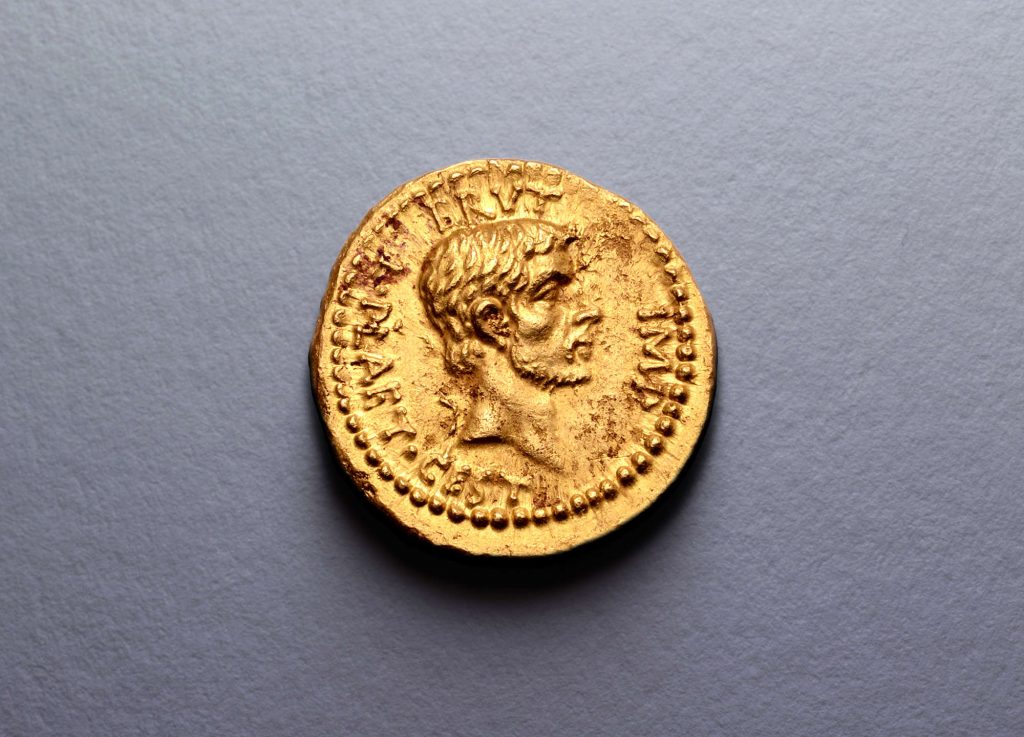Crime
The Dealer Who Sold the World’s Most Expensive Coin Has Been Arrested for Falsifying the $4.2 Million Artifact’s Provenance
An investigation found the coin, along with other ancient objects, were sold with forged provenance certificates.

An investigation found the coin, along with other ancient objects, were sold with forged provenance certificates.

Taylor Dafoe

An ultra-rare Roman coin set a world record when it was auctioned off for nearly $4.2 million three years ago. But now, the validity of that record is under question after an investigation revealed that the artifact and others were sold with forged provenance certificates, according to a report from ARTnews.
The record-setting coin, called the “Eid Mar” (or “Ides of March”), was minted in 42 B.C.E. to commemorate the assassination of Julius Caesar and is just one of three known examples cast in gold.
Offered at an October 2020 event held by the London-based auction house Roma Numismatics, the coin carried a £500,000 ($650,445) presale estimate. Also featured in the sale was a 2,400-year-old Sicily Naxos coin, which fetched $291,682.
But a probe spearheaded by the U.S. Homeland Security Investigations (HSI) agency found that both coins were offered with falsified provenance documentation. Richard Beale, Roma Numismatics’s owner and managing director, was arrested in New York earlier this year for his role in orchestrating the fraudulent scheme.
Beale now faces charges of grand larceny in the first and second degree, criminal possession of stolen property in the first and second degree, conspiracy in the fourth degree, and scheme to defraud in the first degree.
HSI documents obtained by ARTnews depicted Beale to be something of a rising star in the world of numismatics before his arrest.
A one-time member of the British Army, Beale founded Roma in 2008. The company quickly made a name for itself through its high-quality catalogs and a series of eye-opening, six- and seven-figure sales. Its reputation grew; so did its staff.
Among those that joined the auction house in its early years was a veteran coin expert named Italo Vecchi, who reportedly brought the Eid Mar and Sicily Naxos coins to Roma. It’s unclear where he acquired them.
Beale and Vecchi attempted to sell the coins at the 2015 New York International Numismatics Convention. Interested parties were told that the objects came from “an old Swiss collection,” which is code for coins of suspicious provenance.
After failing to find a buyer, the sellers allegedly paid for falsified documents that claimed the coins came from the collection of the Baron Dominique de Chambrier. The duo also sent the pieces to be authenticated by the Numismatic Guaranty Corporation, where they were confirmed to be authentic.
The Sicily Naxos coin was confiscated at New York’s John F. Kennedy Airport in January of this year, while the Eid Mar coin was seized in February at an unspecified location. A spokesperson for the Manhattan District Attorney’s Office said both objects will be repatriated to their countries of origin.
Beale’s attorney did not immediately respond to a request for comment.
More Trending Stories: